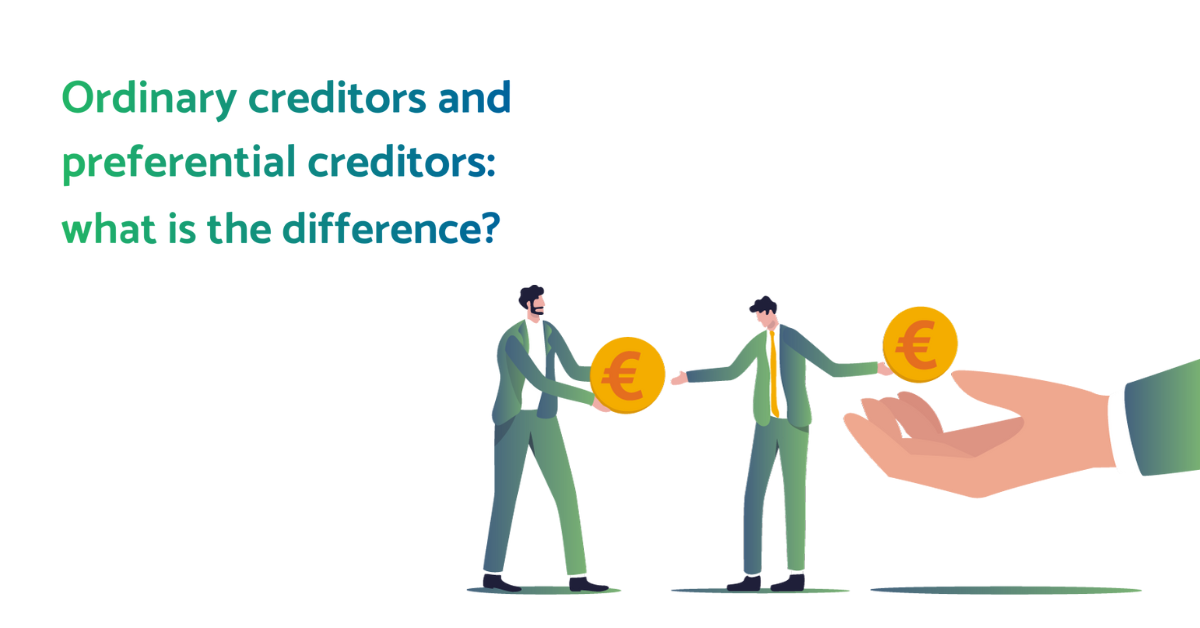Ordinary creditors and preferential creditors: what is the difference?
When a company goes bankrupt, the trustee in bankruptcy uses its assets to pay creditors. The trustee blocks the accounts, sells equipment or machinery and collects any debts, and then pays the company's outstanding debts. But the order in which creditors are paid is not arbitrary. For this, the trustee in bankruptcy applies a legally strict order. Some creditors are therefore more likely to be paid (in full) than others. The decisive factor is whether a creditor is preferential or ordinary.

What are ordinary and preferential creditors?
In a bankruptcy, no creditor is 100% sure that the debts will be paid. However, a preferential creditor is given priority over an ordinary creditor: he can collect the debts of the bankrupt company first.
In other words, ordinary creditors are only paid after the preferential creditors have been able to collect their claims in full. If there is any money left, it goes to the ordinary creditors. The remaining money is divided among them in proportion to the amount of their outstanding invoices.
Who are preferential creditors?
- The tax authorities, the bank, the personnel and the trustee are always preferential creditors. They therefore have the greatest chance of recovering debts from the bankrupt company.
- The landlord is also a preferential creditor. If he still owes rent arrears from the debtor, he will have the privilege of selling the inventory.
- Have you sold an asset to a company that went bankrupt before paying you? Then you have a preferential claim on the proceeds of the sale of that property. This makes you a preferential creditor.
Please note: having the goods of your debtor seized does not affect your position as a creditor. Therefore, this does not make you a preferred creditor.
Who are ordinary creditors?
Ordinary creditors are all creditors who do not have a preferential claim on the bankruptcy payment for legal reasons. Almost all normal suppliers, in other words.
As a supplier (especially of goods) you can protect yourself somewhat by including a retention of title in your general terms and conditions. Unfortunately, the procedure for claiming this is anything but simple.
An example
Company X goes bankrupt and has 250,000 euros in outstanding debts:
- 50,000 euros to the staff
- 75,000 euros to the bank
- 50,000 euros to the VAT
- 25,000 euros to supplier A
- 25,000 euros to supplier B
- 12,500 euros to supplier C
- 12,500 euros to supplier D
After the assets have been sold and all debts have been collected, the trustee has 200,000 euros to pay out.
The staff, the bank and the VAT are paid in full. After this, the amount of 25,000 euros remains. Supplier A & B receive 8,250 euros each, supplier C & D receive 4,125 euros each.
Do not wait too long
Let it be clear: as an ordinary supplier, you have only a small chance of seeing your money after a bankruptcy. That is why it is crucial that you react quickly. If your customer doesn't pay on time, don't wait months to take action.
Here at Unpaid, we send a bailiff to your client within five working days of the date on which you filed the claim. No more waiting, but real action. Submitting a claim is simple and fast.
Start here: